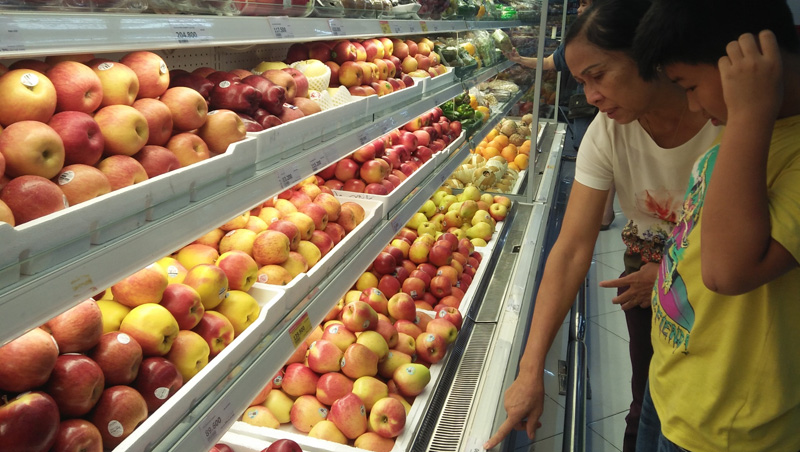



Vietnam’s big potential is expected to see a brighter outlook
On Wednesday next week (September 26), the Asian Development Bank (ADB) will officially launch its Asian Development Outlook update 2018. It is expected that the bank will continue its optimistic view on Vietnam’s economic outlook.
Recently the ADB issued its Asian Development Outlook Supplement report, with a projection that the country’s economic prospects will continue to be bright, at 7.1% in this year and 6.8 % next year.
All economic sectors of the country are experiencing quicker growth in 2018 than in 2017. The index of industrial production has climbed to the highest eight-month level since 2011, at 11.2% annually, boosted by strong global demand for exports and continued foreign direct investment (FDI).
The General Statistics Office reported that in this year’s first eight months, total retail and consumption services revenue rose to the highest eight-month level since 2015, at 11.2% annually, while agriculture almost doubled to 4.1% growth from 2.1 % in the same period last year.
As of August 20, 2018, Vietnam had 26,438 valid FDI projects, registered at US$333.84 billion. In this year’s first eight months, the total disbursed FDI hit US$11.25 billion, up 9.2% annually.
Vietnam’s total export turnover hit a record figure of $214 billion last year, up 21.1% against 2016. The figure reached US$155.41 billion in this year’s first eight months, up 14.5% annually.
"With rising global interest in Vietnam as a destination for FDI, combined with recent progress on major trade deals, including the revised Comprehensive and Progressive Trans-Pacific Partnership, the outlook remains positive for this year and next,” the report stressed.
The US-based Trading Economics, which provides over 20 million economic indicators for 196 countries, just forecast that the GDP growth rate in Vietnam is expected to be 6.8% in this year’s third quarter, and 6.4% in the fourth quarter, before bouncing back to 7% in 2019’s first quarter, and 6.8% in 2019’s second quarter.
"For the entirety of 2018 the economy is expected to grow to 6.7%,” the firm said.
The GDP in Vietnam is expected to be US$229 billion by the end of this quarter. In the long-term, the Vietnam GDP is projected to trend at around US$260 billion in 2020, which is contributed to largely by strong investment and exports, according to Trading Economics global macro models and analysts.
Raymond Mallon, senior economic advisor for the Australia-Vietnam economic reform programme, told Nhan dan Online that Vietnam’s economic outlook is projected to be quite bright.
"I am increasingly optimistic about the short to medium-term prospects for the Vietnamese economy because of recent improvements in building the foundations for macroeconomic stability - including better revenue performance and a declining fiscal deficit - and sustained progress in improving the investment climate and in reducing barriers to fair competition,” said Mallon, who has studied Vietnam’s economic situation for decades.
He cited the Central Institute for Economic Management as estimating that the level of domestic private investment grew by 17.5% in the first 6 months of 2018 compared to 8.5% growth in FDI, and only 3 % growth in state investment.
"Strong private sector investment is helping generate strong employment and income growth. Despite a difficult and uncertain external environment, Vietnam continues to record strong trade growth and impressive inflows of FDI,” Mallon said. "Vietnam’s competitiveness continues to improve, for example, recently jumping 25 places to rank 39 out of 160 countries in terms of the World Bank’s Logistics Performance Index in 2018.”
FocusEconomics, which provides in-depth economic analysis globally, also sees Vietnam continuing to enjoy a bright outlook – with a forecast growth rate of 6.7% in 2018, and 6.6% in 2019. Vietnam’s fixed investment is projected to rise 10% in 2018, and 8.8% in 2019.
Over the past years, Vietnam has also boosted the negotiations and signing of many free trade agreements (FTAs). To date, the country has joined 16 bilateral and multilateral FTAs.
Thus it is clear that, along with its increased international integration via new FTAs, and its improved business climate, skilled workforce, and its big consumption market of over 93 million people, Vietnam currently has ideal conditions to become a big economic hub in the region.
At the World Economic Forum on ASEAN 2018, organised last week in Hanoi, the WEF’s President Borge Brende expressed his admiration on how Vietnam’s economy has grown from strength to strength over the past few years, making the country one of the fastest growing economies in the world.
"Vietnam grew nearly 7% last year, which is an impressive achievement,” Brende said. "Vietnam has been highly valued by many international organisations thanks to its unceasing efforts in improving its business environment.”
However, Mallon suggested that, in order for Vietnam to ensure high growth sustainably and to attract more investment capital, the government would need to solve some challenges.
"The efficiency of state expenditure remains a particular concern. More needs to be done to restructure and expose the remaining state-owned enterprises to competitive market forces,” he said. "It is especially important to improve the competitiveness of those underperforming state utilities providing public infrastructure and services. Accelerated investments are needed to address environmental and urban congestion concerns. More concrete action is needed to ensure the more efficient planning and utilisation of public investment.”